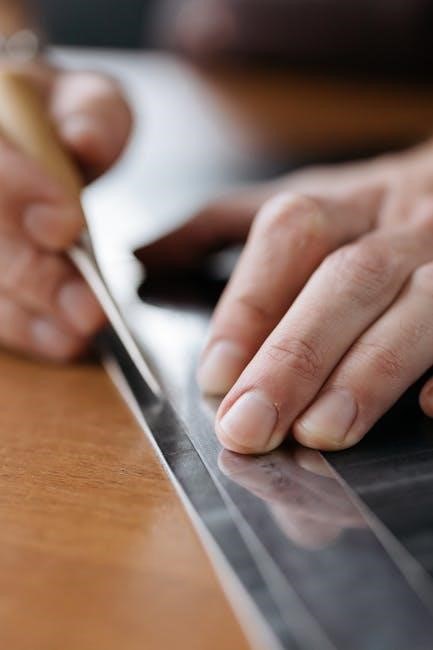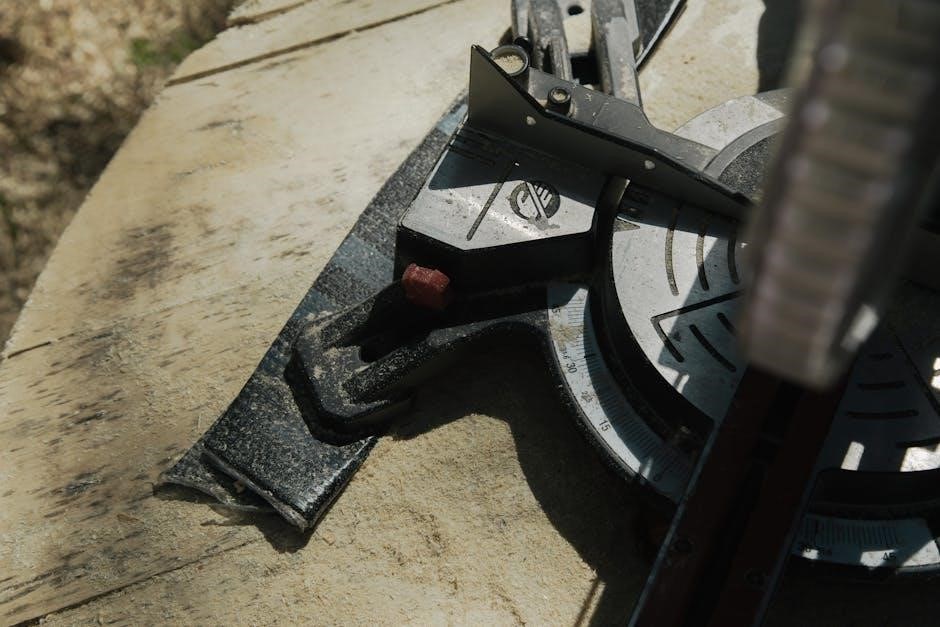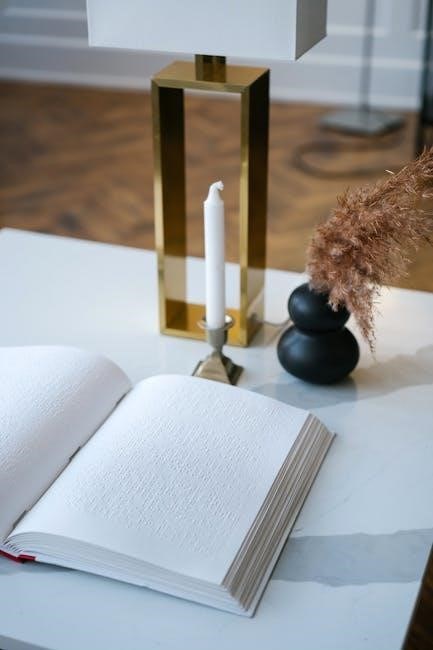Mastering men’s measurements is key to ensuring a perfect fit in clothing. This guide provides essential tips and techniques for accurate sizing, helping you achieve comfort and confidence.
Understanding the Importance of Accurate Measurements
Accurate measurements are crucial for ensuring a perfect fit in clothing, eliminating the need for costly returns or alterations. Proper sizing enhances comfort, confidence, and the overall appearance of garments. Incorrect measurements can lead to ill-fitting clothes that are either too tight or too loose, affecting both style and functionality. By taking precise measurements, individuals can make informed purchasing decisions, whether shopping online or in-store. Additionally, accurate measurements help in maintaining consistency across different brands, which often have varying sizing standards. This guide provides clear, step-by-step instructions to help men measure themselves correctly, ensuring a tailored fit that boosts both comfort and style. Remember, precise measurements are the foundation of a well-fitted wardrobe.

Key Measurement Points for Men
Accurate measurements for men focus on several critical areas to ensure a proper fit. The chest measurement, taken around the fullest part of the chest, is essential for shirts, jackets, and coats. The waist measurement, taken at the natural waistline, is crucial for pants, belts, and outerwear. Inseam and outseam measurements are vital for pant length, ensuring the right fit and style. Sleeve length, measured from the shoulder to the wrist, is key for shirts and jackets. Additionally, neck measurements are important for collar sizing, while hip measurements help with pant fit. Understanding these key points ensures a tailored fit, enhancing comfort and style. Proper measurements eliminate guesswork, making clothing selection more precise and satisfying.

Step-by-Step Guide to Measuring
Use a flexible tape measure to take accurate body measurements. Start with chest, waist, and inseam, ensuring the tape is level and not too tight for precise sizing.

How to Measure Chest Size
To measure your chest size, wrap a flexible tape measure around the fullest part of your chest. Place the tape measure across your nipple line, ensuring it is level and parallel to the floor. Keep your arms at your sides and take a deep breath in, then exhale naturally. The tape should be snug but not tight. Make sure the measure is not pulled down by clothing or sagging. Record the measurement in inches or centimeters. For accuracy, measure twice and take the average. This ensures a precise fit for shirts, jackets, and other garments. Proper chest measurement is crucial for determining your shirt and jacket sizes, providing a comfortable and tailored fit.
How to Measure Waist Size
To measure your waist size, wrap a flexible tape measure around your natural waistline. This is typically just above your hipbone and below your ribcage. Stand upright with your feet shoulder-width apart and your stomach relaxed. The tape measure should be level and parallel to the floor, not too tight or too loose. Make sure the tape isn’t constricted by clothing; if necessary, measure over a thin layer of fabric. Breathe naturally and avoid sucking in your stomach, as this can lead to inaccurate results. The measurement in inches or centimeters will help determine your pant and jacket sizes, ensuring a comfortable and well-fitted garment. For accuracy, measure twice and take the average. Proper waist measurement is essential for achieving the right balance between style and comfort.
How to Measure Inseam and Outseam
To measure your inseam and outseam, start by standing upright and wearing fitted pants or underwear for accuracy. For the inseam, place the tape measure along the inside of your leg, starting at the top of your thigh (where your waistband sits) and running it down to the bottom of your ankle bone. This measurement determines pant length and is crucial for a proper fit. For the outseam, measure from the top of your waistband to the bottom of the pant leg. Both measurements should be taken while standing naturally, with your weight evenly distributed on both feet. Ensure the tape is straight and not twisted for accurate results. These measurements are essential for selecting pants, jeans, or trousers that fit perfectly without being too long or too short.
How to Measure Sleeve Length
To measure sleeve length accurately, start by placing the tape measure at the center of your shoulder, just above the shoulder blade, and run it down the outer arm. Keep your arm slightly bent and relaxed by your side for a natural fit. The tape should follow the curve of your arm, passing over the elbow and ending at the base of your wrist. This measurement ensures the sleeve length is proportionate to your body; For a full sleeve, the tape should reach the tip of your thumb when your arm is extended. Double-check the measurement to ensure accuracy, as proper sleeve length is crucial for both comfort and style. This step is essential for tailoring shirts or jackets to your specific fit preferences.

Understanding Clothing Sizes and Fit
Understanding clothing sizes and fit is crucial for selecting garments that flatter your body. Accurate measurements ensure comfort and style, making the difference between a good and great fit.
Standard vs. Slim vs. Loose Fit: What’s the Difference?
Understanding the differences between standard, slim, and loose fits is essential for choosing clothing that aligns with your body type and personal style. A standard fit offers a classic, comfortable silhouette, suitable for most body types. Slim-fit garments are tailored closer to the body, creating a modern, streamlined look ideal for leaner builds. Loose-fit clothing provides maximum comfort and a relaxed appearance, often preferred for casual settings or layering. Accurate measurements are key to determining the best fit, ensuring both comfort and style. Each fit type caters to different preferences and occasions, making it important to consider your lifestyle and body proportions when selecting clothing.
How to Determine Your Shirt Size
Determining your shirt size begins with accurate measurements. Measure your chest circumference by wrapping a tape measure around the fullest part of your chest, keeping it level and parallel to the floor. Next, measure your neck circumference by placing the tape measure around the base of your neck, ensuring it’s not too tight or loose. Sleeve length is also crucial—measure from the center back of your neck, over your shoulder, and down to your wrist. Compare these measurements to a size chart to find your ideal fit. Shirt sizes are typically labeled as Small, Medium, Large, etc., and may vary slightly between brands. Always check the specific size chart for the brand you’re shopping with to ensure the best fit. Consider your personal preference for a slim, standard, or loose fit when selecting your size.
How to Determine Your Pant Size
Determining your pant size involves measuring your waist and inseam. Start by measuring your natural waistline, which is the narrowest point of your torso, typically just above the hipbone. Use a flexible tape measure and ensure it’s snug but not tight. Next, measure your inseam by placing the tape measure from the base of your crotch to the bottom of your ankle, following the length of your leg. Compare these measurements to a size chart, as sizes vary between brands. Pants sizes are often labeled with a waist measurement and inseam (e.g., 32×34). Consider your fit preference—slim, standard, or relaxed—to choose the best size. Always check the brand’s specific sizing chart for accuracy, as measurements can differ slightly. For the best fit, try pants on if possible, especially if you’re unsure about sizing.
How to Determine Your Jacket Size
To determine your jacket size, start by measuring your chest size, as this is the primary factor. Wrap a flexible tape measure around the fullest part of your chest, keeping it level and snug but not tight. Note this measurement and compare it to a jacket size chart. Next, consider your sleeve length by measuring from the center back of your neck, over your shoulder, and down to your wrist. This ensures sleeves are the correct length. Jacket sizes often correspond to chest measurements, with additional options like slim or regular fit. Check the brand’s size chart, as sizing can vary. Try the jacket on if possible, especially if you’re unsure about the fit. For online shopping, refer to the size chart and reviews to ensure the best fit for your body type and preferred style.

Common Mistakes to Avoid
Avoid slouching, ensure the tape measure is level, and don’t measure over bulky clothing. Incorrect techniques can lead to poor fit, so double-check your measurements carefully.
Mistakes When Measuring Yourself
One of the most common mistakes when measuring yourself is not maintaining proper posture. Slouching or hunching can lead to inaccurate readings. Additionally, measuring over bulky clothing like sweaters or jeans can skew results. Many individuals fail to keep the tape measure level, which is crucial for precise measurements; Another error is not relaxed muscles—tensing up can distort the numbers. Measuring at the wrong time, such as after a heavy meal for waist size, can also cause inconsistencies. Lastly, not using a mirror when measuring hard-to-reach areas, like sleeve length, often leads to incorrect measurements. To avoid these errors, ensure you’re in a relaxed state, wear minimal clothing, and use a mirror for accuracy.
Mistakes When Choosing Clothing Sizes
One common mistake is relying solely on standard size labels, which can vary between brands. Assuming all brands fit the same leads to poor choices. Many overlook fabric type, as stretchy materials offer more flexibility than rigid ones. Ignoring fit preferences, such as slim or loose, often results in discomfort. Size vanity, where men choose smaller sizes for perceived slimness, is another error. Not considering body proportions, like longer torsos needing longer shirts, also causes issues. Lastly, not reviewing size charts or customer reviews can lead to misfits. To avoid these, compare measurements with size charts, consider fabric flexibility, and read reviews for a better fit.

Using Measurements for Personal Style
Accurate measurements enhance personal style by ensuring tailored fits and balanced proportions, allowing men to express their unique aesthetic confidently and effortlessly in every outfit.
How Measurements Relate to Fit and Comfort
Precise measurements are crucial for achieving optimal fit and comfort in clothing. Accurate chest, waist, and inseam measurements ensure garments drape naturally, avoiding restrictive or overly loose designs. Proper fit prevents discomfort from tight waistbands or sleeves, while balanced proportions enhance mobility and confidence. By understanding how measurements translate to fabric distribution, men can select styles that align with their body type, promoting long-lasting comfort and a polished appearance. Accurate sizing is the foundation of both physical ease and stylish expression, making it essential for creating a wardrobe that supports both form and function.
How to Use Measurements to Enhance Your Wardrobe
Accurate measurements are the cornerstone of a well-curated wardrobe. By knowing your precise sizing, you can identify flattering styles that complement your body type, ensuring a polished look. Use your measurements to invest in tailored pieces that fit seamlessly, avoiding ill-fitting garments that detract from your appearance. Build a balanced wardrobe by focusing on proportions, pairing structured items with relaxed fits for versatility. Tailor your shopping by prioritizing brands that cater to your measurements, and don’t hesitate to explore custom or made-to-measure options for a perfect fit. Finally, accessorize thoughtfully, using belts, cuffs, and other details to enhance your silhouette. With precise measurements, you can create a wardrobe that exudes confidence and sophistication, elevating your personal style effortlessly.
